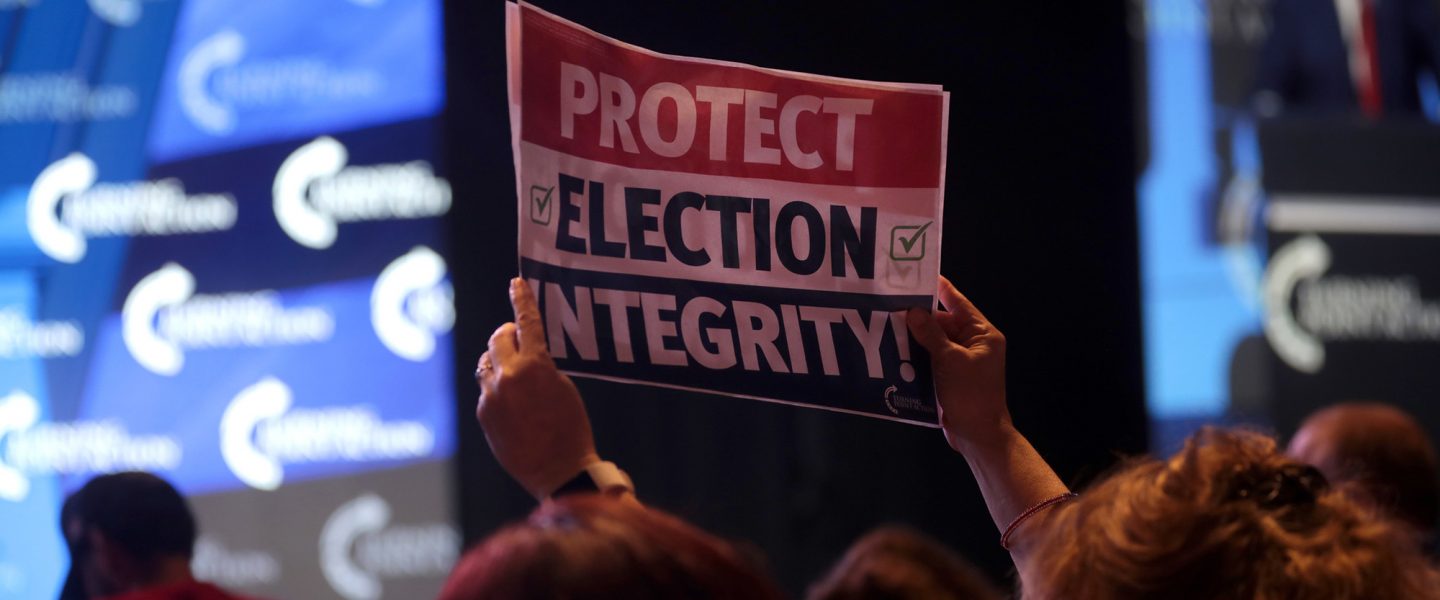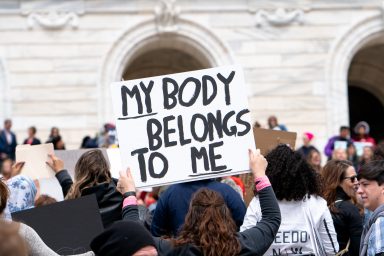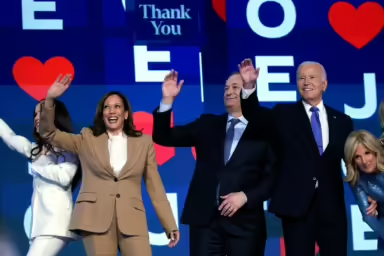We will, and should, be watching carefully the developments in Arizona, which may serve as a template for other key states.
|
Listen To This Story
|
Alanis Morissette couldn’t have put it any better. Grizzled veterans of the pre-Stop the Steal election integrity trenches have, since the 2020 election and Donald Trump’s campaign to overturn it, lived and worked in a state of perpetual irony.
Their decades-long struggle to bring transparency to the American electoral process, first and foremost by making vote counting public and observable, got transformed by Trump into a self-serving attack against democracy itself. Then, in response to this long-predicted weaponization of electoral “integrity,” the more “responsible” actors in the political and journalistic spheres reflexively and also predictably circled the wagons around the “integrity” of our “most secure ever” election.
It is, to be sure, understandable that countering a baseless and dangerous campaign to overturn an election became a compelling priority for democracy’s defenders. But so doing has, unfortunately, closed many minds to consideration of enduring issues with the security and transparency of our electoral processes.
The result has been a topsy-turvy inversion among advocates and activists, in which most if not all of the energy for election reform is now coming from the MAGA Right — in spite of the reality that two decades of statistical forensic analyses indicate that virtually every red flag anomaly, including those that emerged from the 2020 election, advantaged the more right-wing candidate for office.
And conversely, resistance to addressing the vulnerabilities of our electoral processes to manipulation is now most likely to be found on the progressive Left, among Democratic officials and left-leaning media.
Role Reversal in Arizona
One of the most egregious examples of this bizarre reversal of poles is currently playing out in Arizona.
Yes, that Arizona, where the Cyber Ninjas descended on Maricopa County to “audit” the 2020 ballots, and where Republican gubernatorial candidate Kari Lake only recently ran out of legal challenges to her 2022 loss to Democratic Gov. Katie Hobbs — about whom, more to come.
Several weeks ago, WhoWhatWhy ran a column written by John Brakey, a veteran Arizona-based national advocate for election transparency in general and a process for verification of election results using publicly available digital ballot images (DBI) in particular. Brakey explained in detail how the proposed process works, why it would be of great service in restoring much-eroded trust in election outcomes, and why it would be neither difficult nor costly to implement nor pose any threat to the privacy of voters.
Digital Ballot Images: Key to Trustworthy Elections & Bridging Our Great Divide
Within just a few days after the column ran, both the Arizona House and Senate had passed legislation establishing the process, making DBIs publicly accessible and capping many months of legislative endeavor and, for Brakey, many years of advocacy. Celebrations and congratulations were in order, but the bill, HB 2560, still awaited Hobbs’s signature, and this is where the trouble and the irony reared its head.
An Unexpected Veto
While HB 2560 had the support of the deeply informed Democratic secretary of state, Adrian Fontes, it was sponsored by reform-minded GOP legislators and passed on near straight party-line votes, with only token Democratic support in the Senate and none at all in the House.
To make matters worse, advocacy group Common Cause Arizona came out strongly against it, citing voter privacy issues based in part on a misreading of the bill’s language. Apparently persuaded by these arguments, Hobbs vetoed HB 2560.
Neither Brakey nor the legislation’s sponsors and backers have given up. They are at work on revising the legislation to remove any provision that might be construed, or even misconstrued, as jeopardizing voter privacy. Having introduced a fresh bill (SB 1518), they hope to win over the governor and key Democrats in the legislature, to whom they have sent a letter persuasively explaining how all concerns about voter privacy have been addressed and urging reconsideration of the legislation’s fundamental reform — making the ballot images, which bear no voter identification, publicly available so that the public can, in essence, verify for itself the accuracy of the count and the legitimacy of election results.
The bill’s proponents have — in addition to the support from Fontes, a key player in statewide election administration — received a big boost in the form of a strong post-veto endorsement by the Pima County Democratic Party. Piima, home of Tucson, is, after Maricopa, the state’s second largest county, with significant Democratic representation in the Legislature.

Brakey’s organization, AUDIT USA, has also gathered 10 “VIP” letters in support of the public release of ballot images, including from Florida State Democratic Party Chair Nikki Fried; Democratic Co-Chair of the New York State Board of Elections Douglas Kellner; Tennessee Democratic State Board of Elections member Bennie Smith; and computer expert John McCarthy of Verified Voting.
What We’re Learning
We will, and should, be watching carefully the developments in Arizona, as this reform may well establish a template that other states pursuing greater electoral transparency and trustworthiness can adopt. Meanwhile, there are several instructive takeaways from how this reform effort is playing out.
The first is that the hyperpolarization and tribalism that have come to characterize American politics in the Trumpocene often make it exceedingly difficult, whether in Washington or in state capitols, for the two parties to come to agreement, even on matters such as election transparency where they should be able to find common ground.
The situation in Arizona is such that the Republican House and Senate majorities have allowed virtually no Democrat-sponsored legislation to come to the floor of their chambers. In response, Democrats have more or less reflexively refused to give support to GOP-sponsored bills, such as HB 2560.
When you look at the yes/no split on HB 2560 and compare it to the split when Democrats in Congress last attempted to pass election reform legislation (The John R. Lewis Voting Rights Advancement Act), you will see a political mirror image, with little to account for it beyond the bizarre and disorienting dynamic pointed to by Brakey — that right now the fallout from Stop the Steal, and the Trump presidency more generally, is such that whatever one party is for the other party will be reflexively against.
The irony, for a process-oriented nonpartisan reformer like Brakey, is that he has stayed in exactly the same place and now finds that supporters and opponents have switched cheering sections.
And, for anyone gathering and analyzing data and seeking to ask reasonable questions about election results, the irony is they are likely to be perceived, first and foremost, as giving deadly oxygen to the cult of Trump-besotted Stop-the-Stealers who have stormed the Capitol and continue to pose a very real threat to our democracy.
The final takeaway from the Arizona drama is that, in spite of political inversions and tribalism, there may yet be a path for such vital reforms.
The fate of DBIs and election transparency more generally — in Arizona and in other states grappling with the difficulties of achieving genuine electoral integrity — remains uncertain. What is certain is that it is the dedication and persistence of advocates such as John Brakey and his colleagues that give the emergence of American democracy from this dark passage a fighting chance.
Jonathan D. Simon is a senior editor at WhoWhatWhy and author of CODE RED: Computerized Elections and the War on American Democracy.
WhoWhatWhy values our readers’ input and encourages you to drop us a note with your thoughts on this article at MyView@whowhatwhy.org. Your note will not be publicly displayed.




